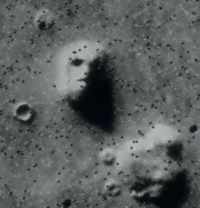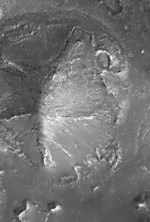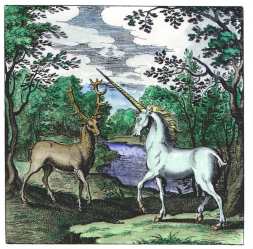
Artist: Michael Knigin
Title: Company Accepted
Medium: Limited Edition Print
Edition: 90
Size: 22" x 30"
 |
Michael Knigin was born in Brooklyn, New York. He did his undergraduate study at the noted Tyler School of Art at Temple University, Pa. Knigin later became director of Chiron Press, N.Y., a tine art silk-screen and lithography workshop. The shop remained in existance for seven years, printing and publishing editions for the most renowned contemporary artists, including Andy Warhol, Roy Lichtenstein, and Paul Jenkins. After selling Chiron press in 1974, Knigin was invited by the Israel Museum by the Jerusalem Foundation to establish the first professional silkscreen and lithographic workshop in Israel, and to train a group of young Israei artists. While in Israel, he collaborated with the Ministry of Labor and Education, along with nationally and internationally known artists from Israel, the United States and Europe. After his tenure at the graphic center he returned to New York and proceeded to create his own prints and paintings. At that time, Knigin was appointed a Professor at Pratt Institute, where he still teaches.
In 1988 he was appointeed to the NASA Art Team and was sent to the Kennedy Space Center to visually interpret the launch of the Space Shuttle Discovery, celebrating NASA's return to space after the Challenger's disaster in 1986.
In 1991 he was recalled to interpret the touchdown of the space shuttle Atlantis at Edwards Air Force Base. Along with these honors, he has received many awards including Cleo Award for art direction, a fellowship of the American Film Institute in Los Angeles, and Art Technology Grant, two certificates of Merit from the National Society of Illustrators. He has judged seven national and international art shows. From 1978 to the present he has had 17 one-person shows, and has been included in approximately a hundred and twenty group shows here and abroad.
His work has been written about in approximately 40 articles, featured in publications such as The New York Times, Art in America, and Art News. Last but not least he has been commissioned to create art by over 40 corporations and institutions. His accomplishments in the art field are significant. His contributions to Israel and The United States are well respected by artists, educators, and collectors alike.
Mr. Knigin's images are acclaimed internationally. Knigin intermingles a variety of images, including photo, with the purpose of making specific statements. Most often, he juxtaposes natural images with man-made works, often photographically rendering parts of the imagery for effect.
The subjective content of Knigin's work illustrates his concern with specific themes: the dehumanization of mankind, the schism between modern man and nature, the appar- ent lack of concern with the "beautiful" and the "elegant" in the Mainstream of contem- porary culture.
With startling contrast, Knigin portrays the distances that have appeared in our lives between elements of nature and modern industrialized society. Always present is a profound sense of the whimsical, a touch of magic.
Knigin's imagery takes us closer to our modern realities in a meld of the classical and the current, both technically and con- ceptually. The images, sometimes lyrical, other times piercing, transform the experience of "reality" for the viewer. We're no longer in the presence of objects as we know them, but transported into a multi-layered repre- sentation of a potentially new reality. The unexpected play of objects is reinforced by exquisitely manipulated colors and a range of complementary surfaces and textures. With this, Knigin creates an original pictoral "language" that pleases as it perplexes. This "language" is not a new one.. .the vocabulary consists of objects and environ- mental elements familiar to us.
Through the various means (color, texture, fragmentation) plus the use of the viewer's imagination, Knigin presents a "new translation" of the language we know. The viewer is free to per- sonalize the symbols, thus completing Knigin's image-statements.


















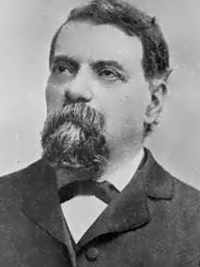 Mars was seen to be orange-brown but there were variations in colour and most interestingly, there were icecaps. The fuzzy patches of dark and light brown-orange changed with the Martian seasons. The conclusion was that this must be due to changes in vegetation growth.
Mars was seen to be orange-brown but there were variations in colour and most interestingly, there were icecaps. The fuzzy patches of dark and light brown-orange changed with the Martian seasons. The conclusion was that this must be due to changes in vegetation growth. 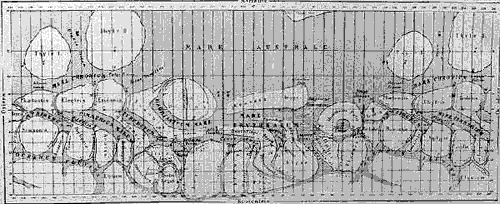
 The debate however seemed ended when Percival Lowell entered the scene. Lowell was a rich businessman, more or less retired and with a passion for astronomy. He built his own observatory on a clear mountain summit near Flagstaff Arizona, primarily for Mars-watching. He constructed one of the largest telescopes ever made, until that time, and concentrated on producing detailed maps of his Red Planet. He reinforced the debate in favour of the existence of the canals, by showing how the intricate canal system functioned. Lowell was a powerful publicist and an advocate for astronomy. We are heavily indebted to him for bringing the subject to public attention and creating interest in space, in general. We also have his invaluable legacy in Arizona: the Lowell Observatory is now one of the world's leading astronomical institutions.
The debate however seemed ended when Percival Lowell entered the scene. Lowell was a rich businessman, more or less retired and with a passion for astronomy. He built his own observatory on a clear mountain summit near Flagstaff Arizona, primarily for Mars-watching. He constructed one of the largest telescopes ever made, until that time, and concentrated on producing detailed maps of his Red Planet. He reinforced the debate in favour of the existence of the canals, by showing how the intricate canal system functioned. Lowell was a powerful publicist and an advocate for astronomy. We are heavily indebted to him for bringing the subject to public attention and creating interest in space, in general. We also have his invaluable legacy in Arizona: the Lowell Observatory is now one of the world's leading astronomical institutions.